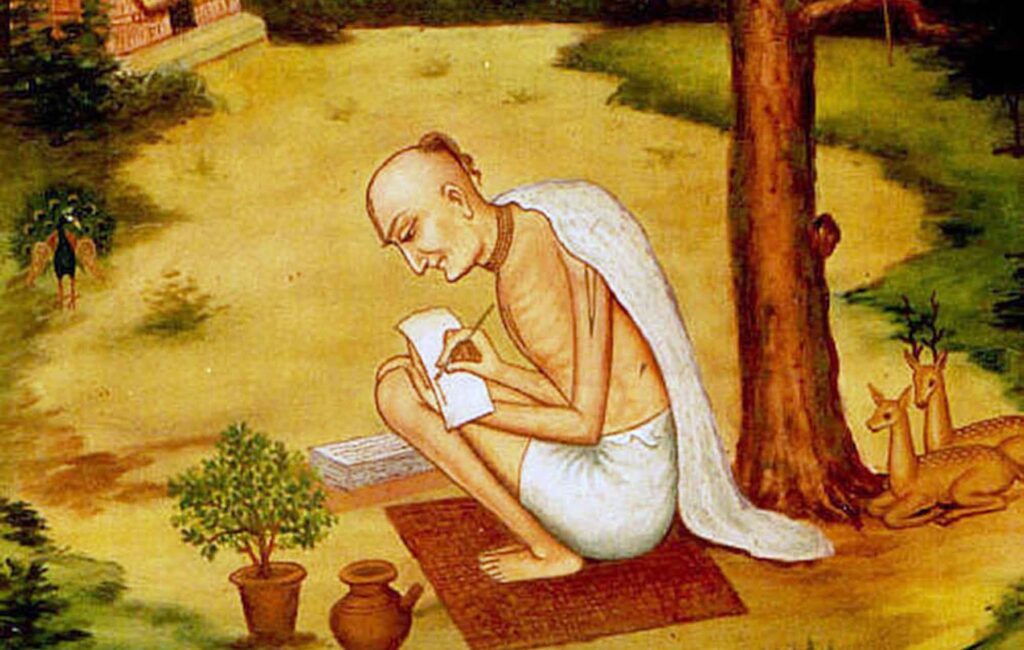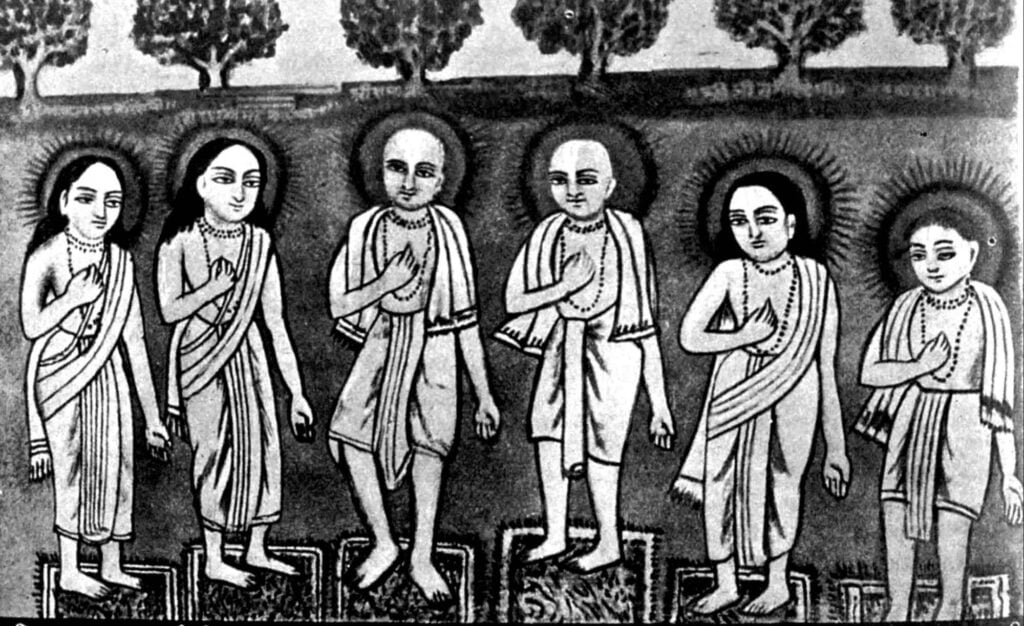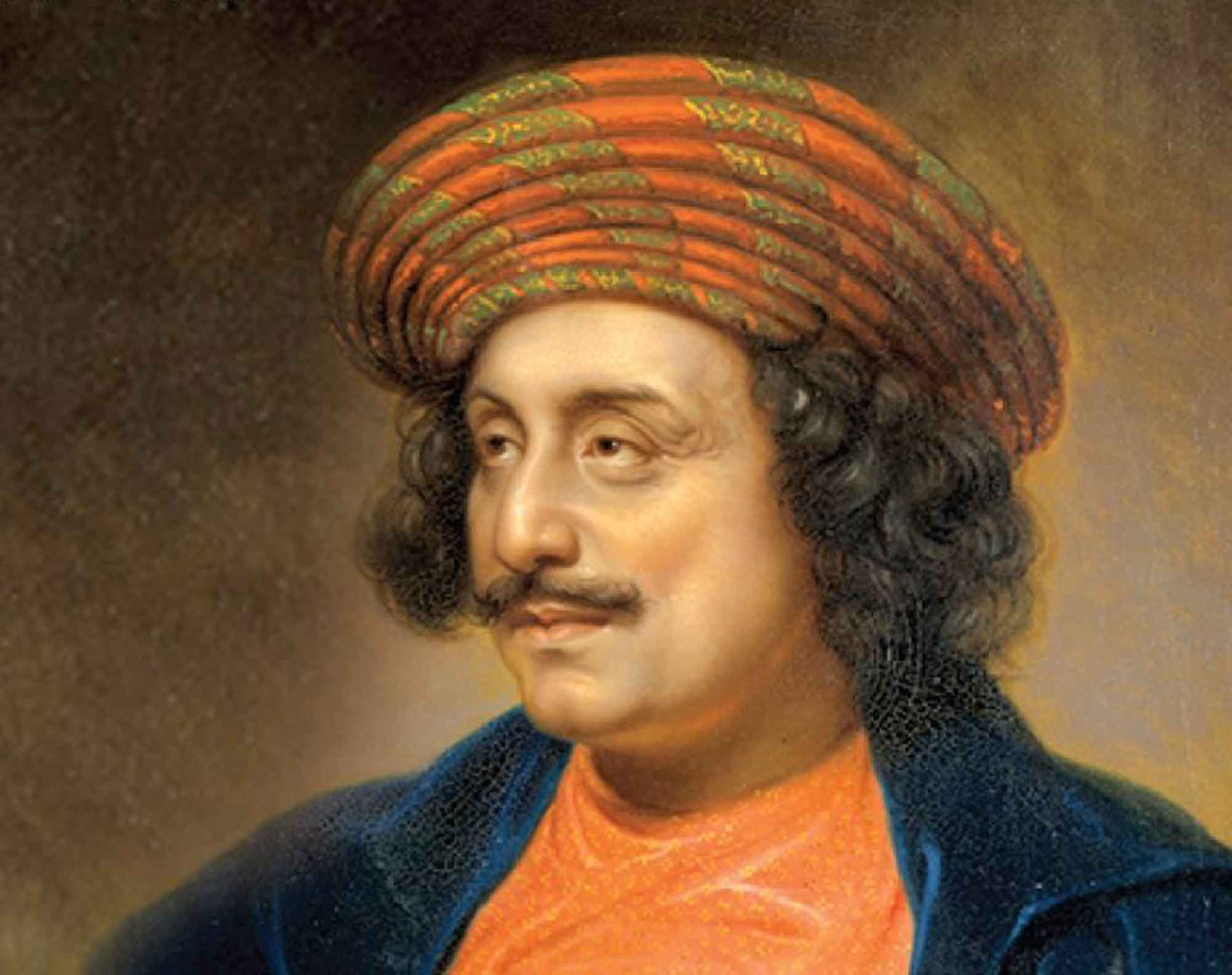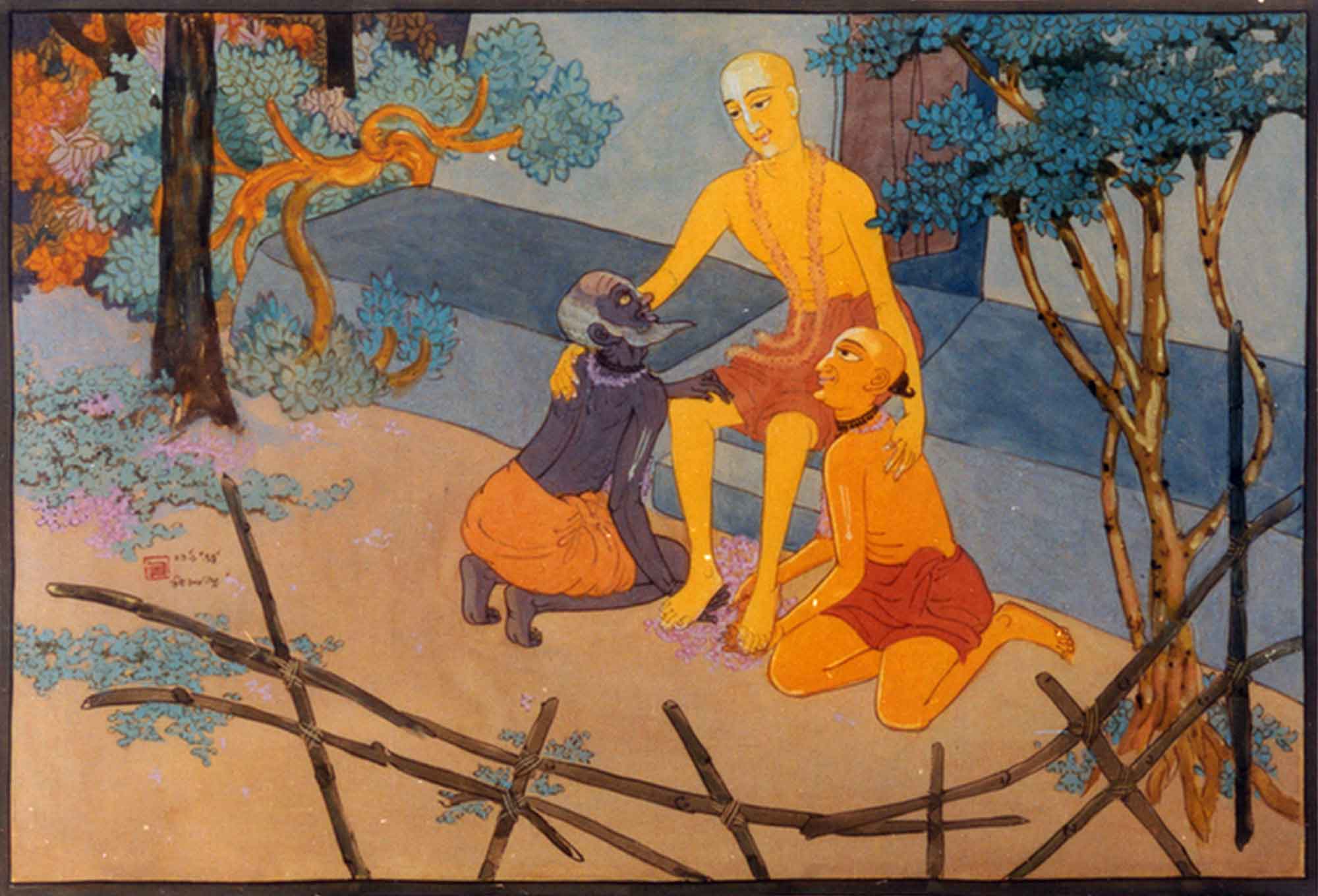Overview
‘Śrī Śrīnivāsa Ācārya Prabhu’ was first published in Sajjana Toṣaṇī, Vol.2 issue 10 in 1885. In this short biography, Bhaktivinoda Ṭhākura narrates the life of Śrīnivāsa Ācārya and his pilgrimage to Navadvīpa, Purī and Vraja-dhāma.
(translated by Swami B.V. Giri)
Sunday the 1st of Āgrahāyana is the disappearance observance of Śrī Śrīnivāsa Ācārya Prabhu. Śrīnivāsa Ācārya was born in the village of Cākhundī in the district of Burdwan in a brāhmaṇa family. As a child Śrīnivāsa took shelter at the feet of Śrī Śrī Caitanya Mahāprabhu after hearing Mahāprabhu’s qualities sung by his father. Then, as soon as he reached puberty, with the permission of his father and mother, he accepted the vairāgya-āśrama (the renounced order of life).
Upon entering the path of renunciation, first of all, he went to Śrī Navadvīpa-dhāma with a desire to take darśana of Śrī Śrīmatī Viṣṇupriyā Ṭhākurāṇī, the potency of Mahāprabhu, and her guardian, Śrī Śrī Vaṁśīvadanānanda Prabhu, the intimate associate of Mahāprabhu. He also wanted to visit all the places of Mahāprabhu’s līlā.
Arriving in Navadvīpa, he stayed at the house of Viṣṇupriyā Mātā, hearing līlā–kathā from Vaṁśīvadanānanda and took darśana of the various pastime places with him. Thereafter he bid farewell to Viṣṇupriyā and Vaṁśī and took darśana of twelve holy places and all the other areas where the devotees of Caitanya were residing. After meeting the devotees for a few days, he went to Śrī Puruṣottama-dhāma. There he met with the associates of Mahāprabhu for some time, and he took darśana of the eternal Jagannāthadeva and heard narrations and kīrtana of Mahāprabhu. According to some books, immediately after accepting renunciation, Śrīnivāsa first went to Śrī Puruṣottama. Whatever the case, no conclusion is necessary concerning this. From Puruṣottama, Śrīnivāsa returned to Gauḍa-maṇḍala and remained there for some time. After that, he travelled to Śrī Vṛndāvana-dhāma for darśana. Upon arriving in Vraja-dhāma, Śrīnivāsa met with the Gosvāmī Prabhus and took darśana of all the holy places in Vrajapura and he continuously experienced newer and newer feelings of bhāva. In this way, Śrīnivāsa remained in Vraja for many days and then returned to Gauḍa-maṇḍala, which is a land of transcendental touchstone, in order to deliver all the ignorant people. Śrīnivāsa’s miraculous life is narrated throughout the Śrī Caitanya Prema Līlāmṛta and Bhakti Ratnākara.













